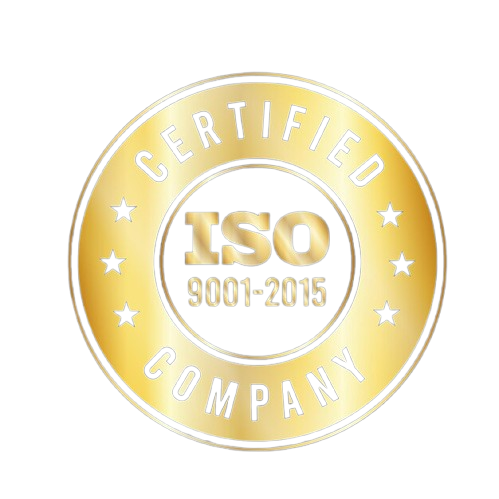Sustainable Cleanroom Design: How to Minimize Environmental Impact
In today’s environmentally conscious world, the push for sustainability has extended into cleanroom design, where energy-intensive systems and materials have traditionally contributed to a large carbon footprint. Modular construction for cleanrooms is emerging as a viable solution for minimizing environmental impact, providing both flexibility and sustainability. Modular cleanrooms, built with prefabricated components and optimized systems, enable companies in industries such as pharmaceuticals, electronics, and biotechnology to reduce energy use, material waste, and operational costs while meeting ISO standards and contamination control requirements.
Wise Link specializes in designing sustainable cleanrooms that incorporate modular construction techniques and energy-efficient systems. This guide explores the best practices in sustainable cleanroom design, highlighting how modular construction, energy-efficient systems, and eco-friendly materials can reduce the environmental impact of controlled environments.
1. The Environmental Benefits of Modular Construction for Cleanrooms
Modular construction involves fabricating cleanroom components, such as panels, doors, and windows, in a controlled factory environment and assembling them onsite. This approach minimizes material waste, reduces construction timelines, and supports a more adaptable cleanroom structure, making it ideal for organizations that prioritize sustainability.
Advantages of Modular Cleanroom Construction:
- Reduced Material Waste: Prefabrication reduces offcuts and unused materials, minimizing waste compared to traditional construction methods.
- Energy Efficiency During Assembly: Modular components are manufactured in a controlled setting, reducing the energy required onsite during assembly.
- Scalability and Reusability: Modular cleanrooms can be expanded, reconfigured, or even relocated, extending the lifespan of materials and reducing the need for new construction.
Wise Link’s Modular Solutions: Our modular cleanrooms are designed to provide flexibility and efficiency. With high-quality, recyclable materials, Wise Link’s modular systems allow clients to scale operations sustainably, adapting to changes in production needs with minimal environmental impact.
2. Energy-Efficient HVAC and Air Filtration Systems
HVAC systems are one of the largest energy consumers in cleanroom operations, as they regulate airflow, temperature, humidity, and pressure to maintain contamination control. Sustainable cleanroom designs incorporate energy-efficient HVAC systems that use advanced technology to optimize airflow while minimizing energy consumption.
Optimized Airflow Control
Smart airflow systems in cleanrooms allow for precise adjustments in air volume, enabling cleanrooms to reduce airflow when particle levels are low and increase it only when necessary.
- Variable Air Volume (VAV) Systems: VAV systems adjust the airflow rate based on real-time contamination levels, providing energy savings by maintaining optimal airflow only when needed.
- Energy Recovery Ventilation (ERV): ERV systems recover energy from exhaust air to pre-condition incoming air, reducing the HVAC system’s energy demands.
Efficient Filtration
HEPA (High-Efficiency Particulate Air) and ULPA (Ultra-Low Particulate Air) filters are essential for cleanrooms but can contribute to energy use due to airflow resistance. Low-resistance filters maintain air quality while reducing the energy required for airflow.
- Low-Resistance HEPA/ULPA Filters: High-efficiency filters with low resistance improve airflow and reduce HVAC energy consumption without compromising particle capture.
- Smart Monitoring Systems: IoT-enabled monitoring systems provide data on air quality and filtration status, allowing operators to optimize settings and ensure filters are replaced only when necessary.
Wise Link’s HVAC Solutions: We incorporate VAV, ERV, and low-resistance filters in our cleanroom designs to optimize airflow and filtration while reducing energy costs, supporting clients in achieving a more sustainable cleanroom environment.
3. Eco-Friendly Materials for Modular Cleanroom Construction
Material choice is critical to reducing the environmental impact of cleanrooms. By selecting durable, recyclable, and low-emission materials, modular cleanrooms can support sustainability while maintaining cleanliness standards.
Recyclable and Low-Emission Materials
Materials used in cleanroom walls, floors, and ceilings should be durable, non-shedding, and capable of withstanding frequent cleaning with disinfectants. Sustainable cleanroom designs incorporate materials that meet these standards without introducing high levels of volatile organic compounds (VOCs).
- Stainless Steel and Aluminum: Both metals are fully recyclable and widely used for cleanroom construction due to their durability, corrosion resistance, and low environmental impact.
- Low-VOC Panels and Coatings: Low-VOC materials contribute to better indoor air quality and reduce harmful emissions, supporting a healthier environment for personnel.
- Eco-Friendly Insulation: Insulation materials like rock wool or high-performance foam offer strong thermal control with minimal environmental impact, reducing the need for extensive heating and cooling.
Modular Panels for Reduced Waste
Modular cleanroom panels are prefabricated and ready for immediate assembly, significantly reducing onsite waste and construction-related emissions. These panels are often made from recyclable materials and can be easily expanded or reconfigured, extending their lifespan.
Wise Link’s Material Selection: We prioritize eco-friendly, recyclable materials in our modular cleanroom designs, ensuring that each project meets the highest sustainability and compliance standards.
4. Smart Technologies and Automation for Resource Optimization
Automation and smart technologies in cleanrooms play a crucial role in optimizing energy, water, and material usage. By using IoT sensors, automated controls, and data analytics, cleanrooms can monitor and adjust settings in real time, ensuring resources are used efficiently.
Automated Lighting and Environmental Controls
LED lighting and automated lighting controls are essential for reducing energy use in cleanrooms, particularly in areas with high lighting requirements. Automated lighting systems can adjust based on occupancy or daylight availability, ensuring lights are only used when necessary.
- LED Lighting: LED lights consume less energy and have a longer lifespan, reducing both energy costs and replacement frequency.
- Occupancy Sensors and Daylight Harvesting: Automated controls use sensors to adjust lighting levels, further reducing energy use during off-peak hours.
Real-Time Monitoring and Predictive Maintenance
Real-time monitoring systems provide continuous data on cleanroom conditions, enabling proactive adjustments and predictive maintenance. This reduces unnecessary energy use and supports longer equipment life by addressing issues before they lead to breakdowns.
- IoT-Enabled Sensors: These sensors monitor temperature, humidity, and particle levels, allowing HVAC systems to make real-time adjustments to optimize performance and energy usage.
- Predictive Maintenance: Data analytics predict when equipment, such as filters or HVAC components, needs maintenance, reducing downtime and extending equipment lifespan.
Wise Link’s Smart Technology Integration: We offer cleanroom designs that incorporate smart lighting, monitoring, and predictive maintenance solutions, enabling clients to maintain compliance and efficiency while reducing resource use.
5. Water Conservation and Waste Reduction in Cleanroom Operations
Water is often used in cleanroom operations for humidification, cleaning, and cooling. Sustainable cleanroom designs incorporate water-saving technologies and waste reduction strategies to minimize environmental impact.
Water-Efficient Fixtures and Closed-Loop Systems
Water-efficient fixtures reduce water consumption for cleaning and sterilization processes, while closed-loop systems recirculate water used for cooling, minimizing waste.
- Low-Flow Faucets and Humidifiers: Reduce water usage without compromising cleanliness or humidity control.
- Closed-Loop Cooling Systems: Recirculate water used for cooling, decreasing the demand for fresh water and reducing wastewater.
Sustainable Waste Management
Effective waste management is essential for sustainable cleanroom operations. Cleanrooms can implement recycling programs and use waste-reducing practices to manage material usage and disposal responsibly.
- Recycling Programs: Encourage the reuse of materials, especially in modular construction, where panels and components can be recycled or repurposed.
- Minimizing Single-Use Supplies: Using reusable or recyclable materials instead of single-use items reduces waste generation and supports sustainability goals.
Wise Link’s Waste Reduction Solutions: We incorporate water-efficient fixtures, closed-loop systems, and waste reduction practices in our cleanroom designs, helping clients minimize resource use and reduce environmental impact.
Conclusion: Achieving Sustainable Cleanroom Design with Wise Link
The shift towards sustainable cleanroom design reflects an industry-wide commitment to reducing environmental impact, managing resources responsibly, and supporting a greener future. By leveraging modular construction, energy-efficient systems, eco-friendly materials, and smart technologies, cleanrooms can achieve ISO compliance while operating sustainably. These innovations not only contribute to environmental goals but also reduce operational costs and improve efficiency.
At Wise Link, we are dedicated to delivering modular cleanroom solutions that prioritize sustainability without compromising cleanliness standards. From energy-saving HVAC systems to eco-friendly materials and smart automation, we help clients achieve a sustainable, high-performance cleanroom environment. Contact Wise Link today to learn more about how our sustainable cleanroom designs can support your environmental goals and operational needs.
Build a Greener Future with Sustainable, Modular Cleanroom Design
Wise Link’s modular cleanroom solutions are designed to reduce environmental impact, lower operational costs, and meet stringent ISO standards. With energy-efficient systems, recyclable materials, and smart technologies, our cleanrooms help you achieve sustainability without compromising performance. Contact us today to discover how our sustainable cleanroom designs can support your environmental goals and enhance your operations.



